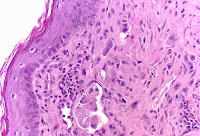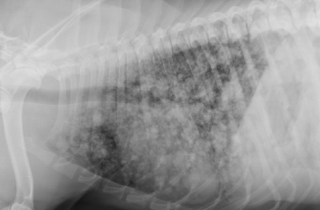The gastrointestinal tract consists primarily of the stomach, small intestine and large intestine. It is always difficult to see dogs suffering from foreign body ingestion. But as a Surgeon much excitements and rewarding results are seen in immediate intervention of foreign body ingestion cases . The foreign body entered in side the mouth can pass smoothly through the oesophagus , stomach , small intestines- duodenum, ileum, jejunum, Large intestines- cecum colon rectum and finally it can come through the anal opening outside . But it can also get struck up in any place and the commonest blocks can be encountered in
1. Pharynx – Isthmus faucum
2. Oesophagus
3. Stomach
4. Duodenum
5. Jejeunum
6. Ileum
7. Ileo cecal junction
In this blog I am sharing some memorable cases of intestinal obstruction in my career.
Due to indiscriminate eating habits from PICA or Phosphorous deficiency, high worm load due to improper deworming or accidental ingestion of toys or plastic or hard objects , the animal may swallow hard foreign objects which can lodge at any of the above mentioned sites
NON LINEAR OR SOLID FOREIGN BODY
Solid foreign bodies may get lodged in any part of the GIT depends up on the sharpness of edges , size and consistency. There were very two very interesting cases of non linear foreign bodies last month.
TOY WHEEL FOREIGN BODY IN THE JEJUNUM OF A LABRADOR RETRIEVER

 A Labrador was referred by a field veterinarian in Thrissur with the history of off feed, not passing motion and extremely painful abdomen. On palpation a hard mass was palpable on the cranial abdomen caudal to the stomach .close examination of lateral abdomen radiograph revealed a shadow of round mass won the abdomen caudal to stomach . On exploratory laparotomy a toy wheel was retrieved from jejunum.
A Labrador was referred by a field veterinarian in Thrissur with the history of off feed, not passing motion and extremely painful abdomen. On palpation a hard mass was palpable on the cranial abdomen caudal to the stomach .close examination of lateral abdomen radiograph revealed a shadow of round mass won the abdomen caudal to stomach . On exploratory laparotomy a toy wheel was retrieved from jejunum.

GRANITE STONE IMPACTION IN A BASSET HOUND
Solid foreign bodies may get lodged in any part of the GIT depends up on the sharpness of edges , size and consistency. There were very two very interesting cases of non linear foreign bodies last month.
TOY WHEEL FOREIGN BODY IN THE JEJUNUM OF A LABRADOR RETRIEVER

 A Labrador was referred by a field veterinarian in Thrissur with the history of off feed, not passing motion and extremely painful abdomen. On palpation a hard mass was palpable on the cranial abdomen caudal to the stomach .close examination of lateral abdomen radiograph revealed a shadow of round mass won the abdomen caudal to stomach . On exploratory laparotomy a toy wheel was retrieved from jejunum.
A Labrador was referred by a field veterinarian in Thrissur with the history of off feed, not passing motion and extremely painful abdomen. On palpation a hard mass was palpable on the cranial abdomen caudal to the stomach .close examination of lateral abdomen radiograph revealed a shadow of round mass won the abdomen caudal to stomach . On exploratory laparotomy a toy wheel was retrieved from jejunum. 
GRANITE STONE IMPACTION IN A BASSET HOUND

 . An exploratory laparotomy was performed by induction and maintenance using thiopentone sodium 2.5 % to the effect under general anaesthesia with atropine and Xylazine as pre medicants @ 0.045 mg /kg bw and and 1 mg / kg bwt respectively. A hard intestinal segment was isolated at the mid jejunum and a 2 cm long enterotomy incision on non-mesenteric border exteriorised a granite stone piece was exteriorised. Enterotomy closure was carried out using No 2-0 polyglactic acid suture material in close interrupted pattern. Linea alba was apposed using No 1 poly glactic acid 910 in simple interrupted pattern followed by skin closure in routine manner . Post operatively the animal was treated with antibiotic therapy and fluid therapy for 5 days and oral feeding was withheld for 72 hours post surgery. Sutures were removed on 11th post-operative day and the animal had uneventful recovery.
. An exploratory laparotomy was performed by induction and maintenance using thiopentone sodium 2.5 % to the effect under general anaesthesia with atropine and Xylazine as pre medicants @ 0.045 mg /kg bw and and 1 mg / kg bwt respectively. A hard intestinal segment was isolated at the mid jejunum and a 2 cm long enterotomy incision on non-mesenteric border exteriorised a granite stone piece was exteriorised. Enterotomy closure was carried out using No 2-0 polyglactic acid suture material in close interrupted pattern. Linea alba was apposed using No 1 poly glactic acid 910 in simple interrupted pattern followed by skin closure in routine manner . Post operatively the animal was treated with antibiotic therapy and fluid therapy for 5 days and oral feeding was withheld for 72 hours post surgery. Sutures were removed on 11th post-operative day and the animal had uneventful recovery.LINEAR FOREIGNBODY
Gastrointestinal foreign bodies are regarded as main GI emergencies in companion animal practice .Linear foreign bodies, especially strings, can often lead to extreme painful condition and can result in intussusceptions and
STORY OF DISCO
 I had a dog named Disco when I was working at Hassan Veterinary College. Disco use to accompany me where ever I go and once he came running to me with a long thread seen protruding from his anal opening. On examination a large dressing gauze that he swallowed from the clinics was detected coming out of anus.. One of the student with a good intention to relieve his struggle pulled the thread and he was crying out of pain .
I had a dog named Disco when I was working at Hassan Veterinary College. Disco use to accompany me where ever I go and once he came running to me with a long thread seen protruding from his anal opening. On examination a large dressing gauze that he swallowed from the clinics was detected coming out of anus.. One of the student with a good intention to relieve his struggle pulled the thread and he was crying out of pain .An immediate laparotomy was performed and a large knot of gauze leading to intussusception (invagination of one part of intestine – intusussipiens to the other part – intususceptum was identified) . The intussusception was corrected and we saved Disco by a timely surgery
YOU CAN WATCH A VIDEO ON GASTRO INTESTINAL FOREIGN BODIES BELOW
SIGNS OF OBSTRUCTION
1. Ingested foreign bodies are more common in young animals
2. Vomiting is usually seen with an obstructive foreign body of the gastrointestinal tract, however this is a problem that may be seen with many other diseases
3. Generally if an obstruction of the GI tract is present, diarrhea is usually not a common symptom (as the intestines are obstructed)
a. Loss of appetite
b. Dehydration
c. Abdominal pain Weight loss may be present if the foreign body is chronic
DIAGNOSIS
1. Haematology work is done to determine if there are liver, kidney, pancreas, or electrolyte abnormalities. Complete blood cell count is used to look for signs of infection and anemia.
2. Radiographs (x-rays) can be very helpful to indicate the presence of a problem in the gastrointestinal tract. Unfortunately, plain radiographs frequently are only suggestive of a problem and do not give us a definitive answer; in some cases the radiographs will be made again to see if the signs of obstruction are repeatable. As a result additional tests such as ultrasound or contrast radiographs (barium swallow) may be indicated.
3. Sometimes these tests also do not give us a final answer and exploratory surgery is needed.
4. If we do not find any obvious problem with the internal organs, biopsies still are done as microscopic disease may be causing the clinical signs.
PRINCIPLES OF INTESTINAL SURGERY
1. Early diagnosis and good surgical technique prevent most complications.
2. Perform surgery as soon as anesthesia is possible in patients with perforation, strangulation, or complete obstruction.
3. Optimal healing requires a good blood supply, accurate mucosal apposition, and minimal surgical trauma.
4. Systemic factors may delay healing and increase the risk of dehiscence, hypovolemia, shock, hypoproteinemia, debilitation, and infection.
5. Use approximating suture patterns: simple interrupted, Gambee, crushing, or simple continuous; stapling techniques are feasible.
6. Engage submucosa in all sutures or staples.
7. Select a monofilament, synthetic absorbable suture such as polydioxanone, polyglyconate,
8. Cover surgical sites with omentum or a serosal patch.
9. Replace contaminated instruments and gloves before closing the abdomen.
10. Fluid Therapy
11. Antibiotic Prophylaxis
12. Assessment of Intestinal Viability
13. Choice of suture material for closure.
14. Monofilament synthetic absorbable (PDS) or synthetic non-absorbable (prolene) are excellent choices.
15. Choice of Suture Pattern
16. Simple interrupted pattern is ideal.
17. Suture Reinforcement
18. Application of Omental and serosal patch aids in faster healing
19. Obtain minimum database: complete blood cell count, chemistry profile, urinalysis, coagulation profile (if possible) with or without an electrocardiogram.
20. Localize the lesion with abdominal palpation radiographs, ultrasonography, and/or endoscopy. Correct hydration, electrolyte, and acid-base abnormalities. Transfuse if the packed cell volume is less than 20% or if the animal is clinically weak or debilitated .Withhold food from mature animals for 12 to 18 hours and from pediatric patients 4 to 8 hours before induction.
THANKS FOR VISITING MY BLOG

















